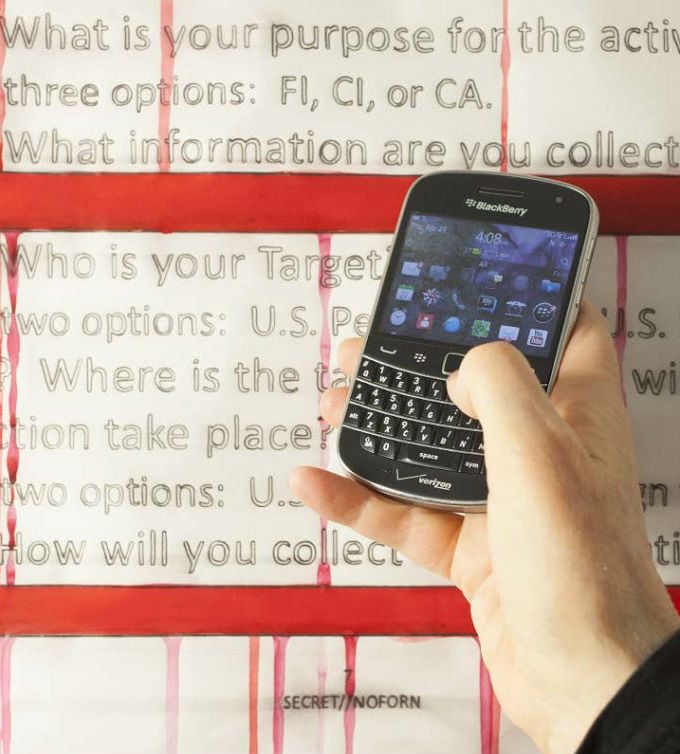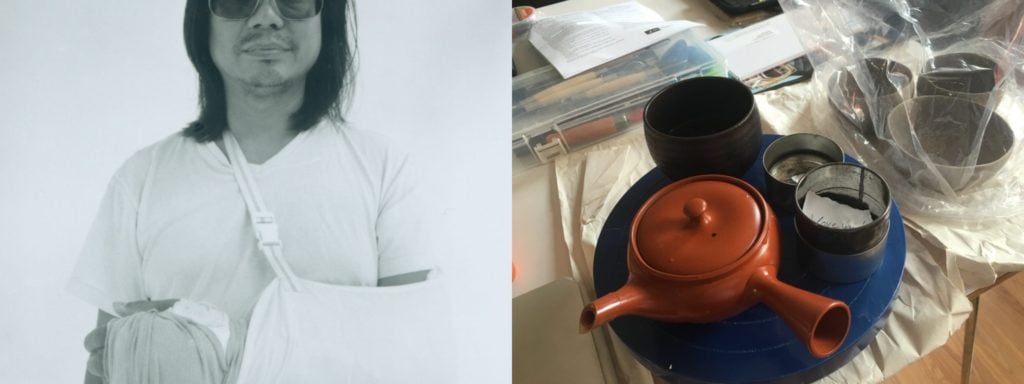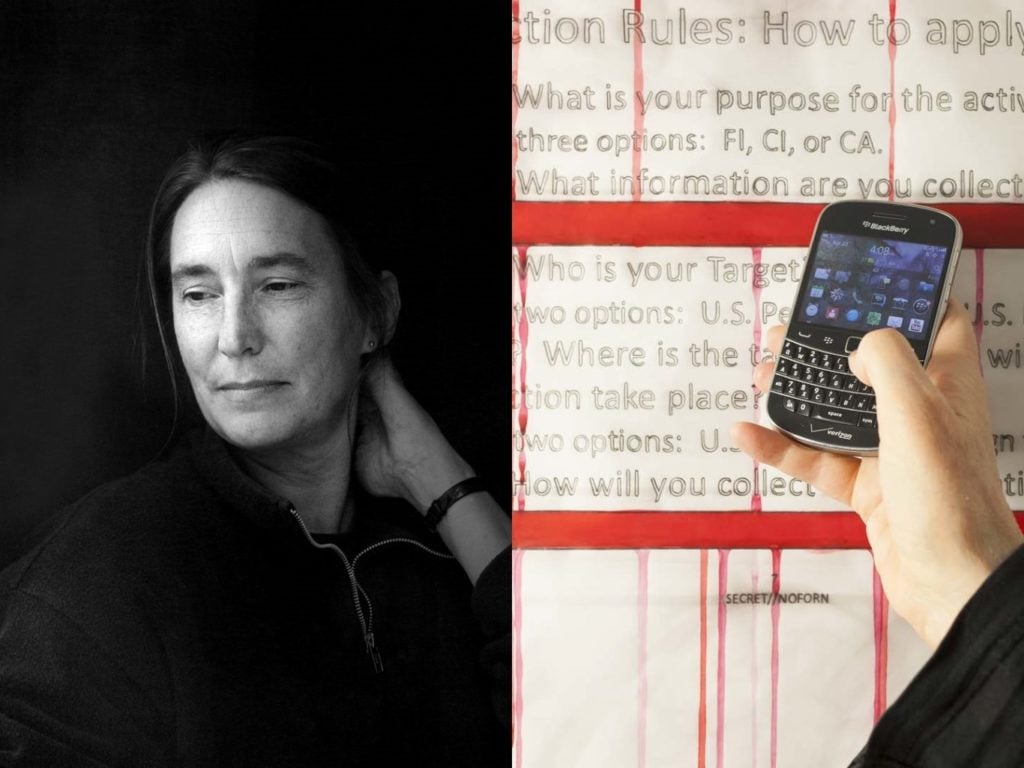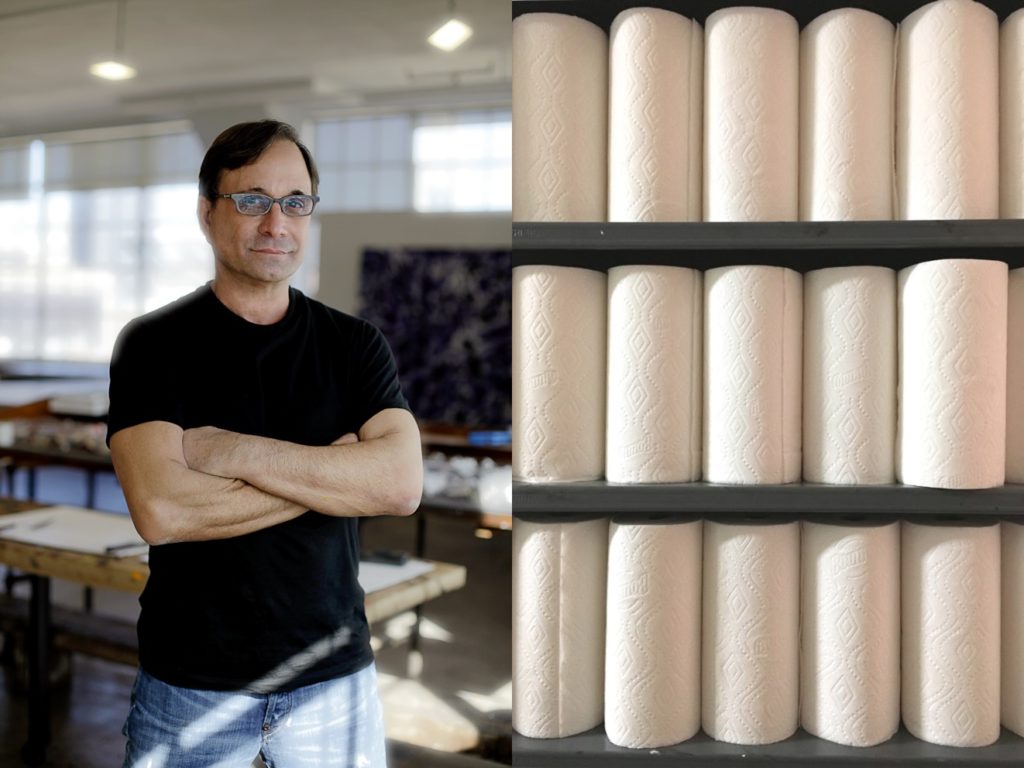Art World
7 Famous Artists Reveal the Surprising Studio Tools They Couldn’t Do Without
A glimpse into the creative process of Jenny Holzer, Shirin Neshat, and others.

A glimpse into the creative process of Jenny Holzer, Shirin Neshat, and others.

Kiki Olmedo

Our mental image of the artist at work is still definitely filtered through Romantic cliché: the solitary painter whose essential art supplies are palette, paintbrush, and divine inspiration. Despite this fact—or maybe because of it—the artist’s studio holds a real fascination.
Today, artists have such a variety of ways of working, from complex conceptual photography to social interaction, that no one image captures it all. Some are even what are called “post-studio artists,” while even the painters work with such a variety of means that no one formula fits.
So, what art supplies are indispensable in contemporary art? We asked seven artists to tell us the one item they couldn’t live without. Below, their picks, with pictures of their chosen tools provided to artnet News by the artists themselves.

Left: Rikrit Tiravijana. Right: Implements for green tea, his lifeblood. Images courtesy the artist.
The Thai artist—whose work famously has involved inviting visitors to share a meal—now lives between New York, Berlin, and Chiang Mai. Despite his travels, there is one constant in his life: Sencha green tea. In his own words, the elixir “keeps me alive.”

Left: Jenny Holzer. Photo by Nanda Lanfranco. Right: the artist’s indispensable Blackberry. Images courtesy of the artist.
Holzer is among the most famous of all text artists, building her career on insightful mantras and urgent missives. It should perhaps come as no surprise, then, that her most indispensable tool is a communication device: her old BlackBerry. “I can pester art people with it,” she tells artnet News.

Left: Pablo Helguera, photo by Elena Snow, Right: A smattering of texts that the artist sources for inspiration. Images courtesy of Pablo Helguera.
The Mexico-born artist has worked in a variety of media, from sculpture and photography to performance to fiction writing. In 2013, he temporarily transformed a New York gallery into a Spanish-language bookstore. Is there a specific fuel for the first of this multimedia practice? The answer is books, specifically, technical manuals and children’s books. Helguera goes through the same ritualistic process every night: “I sit down at my desk with used/discarded books and take their pages to make collages,” he says. “I enjoy it enormously.”
The New York-based painter, whose work draws from politics and pop culture, knows the importance of practicality. Her most valuable in-studio tool? Milk crates. As she explains to artnet News: “They can be configured as tables, taborets, storage, and adjustable platforms for paintings (and paint).” In fact, they are such an integral part of her space that she says she has never “made a painting without using a couple of milk crates in one or more of these capacities.”
The Brazilian artist has made it his mission to force viewers to slow down and engage with nature. His primary art supply—pigment—is, appropriately, low-tech. In studying the fresco technique over the past three years, Rocha Pitta has had to “understand the pigment as a body itself: it has its own behavior, its limits, and its potency,” he says. “Pigment is not only an optical color, it is also a physical body with chemical behaviors.” He gets most of his pigments from Italy and some from Germany, but his favorites are the iron oxide pigments that are abundant in Brazil.
The Iran-born photographer, who often combines images and text in her work, is very picky about her writing utensils. “To inscribe the smaller texts over the surface of [her] photographic images,” she uses only small, archival Pigma Micron pens, black ink, and brushes.

Left: Ross Bleckner, image courtesy Marcus Andersson. Right: Bounty paper towels in his studio. Images courtesy of the artist.
Bleckner is a prolific painter with indisputable attention to detail. The artist singled out Bounty Paper Towels—dozens of them—as his studio necessity. His explanation? He likes to “wipe things away.”
Grabner’s work, which ranges from intricately patterned paintings and drawings to bronze sculptures, is known for its intimacy and precision. That may explain why her instrument of choice is a straight-edge ruler. This tool, she says, “esteems the first qualities of abstraction: math, line, and geometry.”